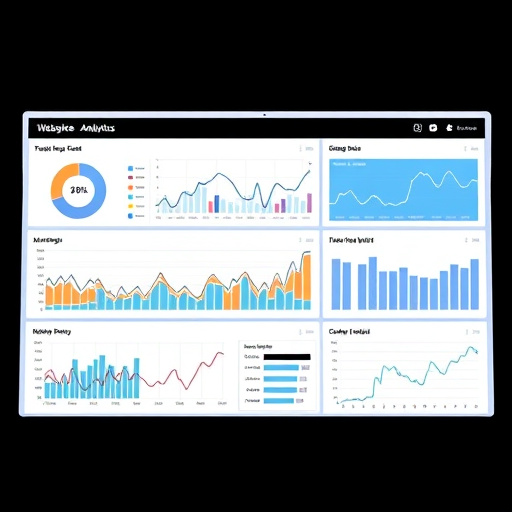Schema Markup Implementation: Boost Content Discoverability Now

Schema markup implementation enhances online visibility for Dallas/Fort Worth businesses by providin…….
In the digital age, where data is a pivotal asset, schema markup implementation has emerged as a game-changer in the realm of search engine optimization (SEO) and web content management. This comprehensive article delves into the intricacies of schema markup, its practical applications, and its profound impact on various sectors. By the end, readers will grasp the significance of this technology, understand its potential to transform online interactions, and be equipped with valuable insights for its effective utilization.
Schema Markup Definition: Schema markup, or structured data markup, is a method of adding rich, machine-readable details to web content using predefined schemas. These schemas provide a standardized way to describe entities, relationships, and events, enabling search engines and other applications to interpret and display information more intelligently.
Core Components:
Schemas: These are structured frameworks that define the types of data you want to mark up. Schemas specify properties or fields that represent specific pieces of information. For example, a “Book” schema might include properties like title, author, publication date, and description.
Microdata Markup: This is the actual code implemented on web pages to embed structured data using schemas. It involves adding specific HTML tags to mark up content, making it easier for search engines to extract and understand.
Search Engine Understanding: Schema markup enhances search engine crawling and indexing processes. By providing structured data, websites enable search engines to better comprehend the content, context, and relationships within their pages, resulting in improved search rankings and enhanced knowledge graph displays.
Historical Context: The concept of schema markup has evolved over time, driven by the increasing need for web content to be understood beyond basic text. In the early 2010s, Google introduced structured data testing tools, encouraging developers to experiment with microdata markup. Over the years, various organizations and initiatives have contributed to expanding schema vocabulary and promoting its adoption, leading to the sophisticated schema implementation we see today.
Schema markup implementation has left a significant global footprint, influencing search engine algorithms and web content strategies worldwide. Here’s an overview of its international impact:
| Region | Impact and Trends |
|---|---|
| North America | Early adopters like Google have played a pivotal role in promoting schema markup. The US and Canada have seen widespread implementation, particularly in e-commerce and travel sectors. |
| Europe | Strict data privacy regulations, such as GDPR, have indirectly boosted schema usage. European businesses focus on consent and transparent data handling, which aligns with structured data practices. |
| Asia Pacific | Rapid digital transformation in countries like China and Japan has led to increased schema adoption. Local search engines are integrating structured data to enhance local business listings. |
| Latin America | With a growing digital economy, Brazil and Mexico are embracing schema markup for e-commerce and content-rich websites. |
| Middle East & Africa | Implementation is gaining traction as regions invest in digitizing their economies. Structured data helps in optimizing online tourism and cultural heritage sites. |
The implementation of schema markup is influenced by various policies and regulations worldwide:
Despite its numerous benefits, schema markup implementation faces several challenges:
Strategic Solutions: To overcome these challenges:
Case Study 1: Online Travel Agency (OTA)
An OTA wanted to enhance its product listings for vacation packages, improving click-through rates and conversion. They implemented schema markup for over 500,000 travel deals, providing rich details about destinations, accommodations, and attractions. As a result, they observed:
Case Study 2: University Website Redesign
A major university redesigned its website with a focus on student engagement and accessibility. They utilized schema markup to structure academic programs, faculty profiles, and event listings. The changes resulted in:
Case Study 3: Local Restaurant Listing Platform
A local business directory launched a schema implementation project to boost its online visibility. They marked up restaurant listings with location, cuisine types, price ranges, and customer reviews. The strategy led to:
The future of schema markup implementation holds immense potential:
Schema markup implementation is a powerful tool that has revolutionized the way search engines understand and display web content. Its global impact, economic benefits, and technological advancements highlight its importance in today’s digital landscape. Despite challenges, the potential for improved SEO, enhanced user experiences, and better data management makes schema markup an indispensable component of modern web development. As technology evolves, schema implementation will continue to shape the future of online interactions, content discovery, and business success.
Q: What is the main benefit of using schema markup?
A: Schema markup improves search engine understanding of web content, leading to better indexing, higher rankings, and more relevant search results. It also enhances user experiences by displaying structured data in knowledge graphs, rich snippets, and enhanced search results.
Q: How do I know which schemas to use for my website?
A: Identify the main types of content on your site and select schemas that best represent them. For example, e-commerce sites should consider “Product” and “Offer” schemas, while news websites might use “Article” and “Event” schemas. Google’s Structured Data Markup Helper can guide you through the process.
Q: Is schema markup necessary for small businesses?
A: While larger enterprises may have more resources to dedicate to implementation, schema markup benefits all businesses by improving SEO and user engagement. Small businesses can start with essential schema types and expand as their online presence grows.
Q: Can schema markup improve website performance?
A: When implemented correctly, schema markup should not negatively impact website performance. In fact, it can lead to faster page loading times by providing search engines with pre-rendered content, resulting in better user experiences and potentially improved rankings.
Q: How often should I update my schema markup?
A: Regularly review and update your schema markup to reflect changes in your business or website content. Industry terminology and search engine algorithms evolve, so keeping schemas current ensures optimal performance and accuracy.

Schema markup implementation enhances online visibility for Dallas/Fort Worth businesses by providin…….

Schema markup implementation boosts online visibility and search rankings in South Florida by provid…….

Schema markup implementation requires careful attention to detail to avoid misinterpretation by sear…….

Schema markup implementation automates online visibility enhancement for websites using structured d…….

Schema markup implementation strategically enhances SEO by providing structured data for search engi…….

Schema markup implementation strategically enhances online visibility by providing search engines wi…….

Schema markup implementation strategically improves online presence and visibility. Search engines u…….

Local businesses in Miami can enhance online visibility and attract customers through schema markup…….

Schema markup implementation is a strategic approach for developers to enhance SEO performance by st…….

Schema markup implementation enhances website visibility and user engagement by providing structured…….